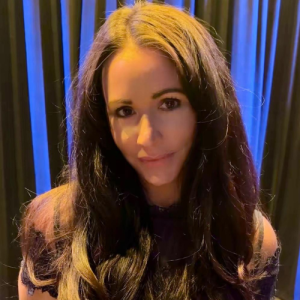GLP-1s Aren’t the Miracle You Think — The Real Healing Starts When You Stop Abandoning Yourself


Paige Elizabeth
Founder and Coach
I recently watched a woman tell her story:

Stress had piled up. She was gaining weight, battling anxiety, and felt like her body was betraying her. Then she got on a GLP-1 medication.
With conviction, she said: “It’s a miracle. I feel so much better now. If you can’t manage your symptoms, you should go on one.”
And while she spoke, you could hear something else layered under her words: defensive shame.
Because here’s the uncomfortable truth — her body didn’t break down out of nowhere. Her symptoms didn’t just arrive like bad luck. They were the direct result of years of living in stress, ignoring signals, and abandoning her own needs.
GLP-1s Do Provide Relief — But It’s Not the Whole Story
I’m not here to demonize GLP-1 medications. They work. They:
- Blunt appetite.
- Slow gastric emptying.
- Create a pause in the constant hunger/stress loop.
- Lower post-meal glucose spikes, which can calm mood swings and energy crashes.
For many, that relief feels like a miracle. Especially for someone drowning in stress who hasn’t felt peace with food or their body in years.
But here’s what we need to get honest about: relief isn’t healing.
GLP-1s may reduce symptoms, but they don’t rewire the physiology that created those symptoms in the first place.
What Happens Long-Term on GLP-1s
The science is still evolving, but here’s what we know so far:
- Weight often rebounds. Most people regain two-thirds of their weight within a year of stopping the drug.
- Muscle is lost with fat. Less lean mass means a slower metabolism and harder weight maintenance later.
- Gut motility changes. Constipation, bloating, and reflux are common, sometimes persisting even after stopping.
- Potential endocrine risks. Animal studies suggest thyroid and pancreatic concerns, though human data is ongoing.
- Psychological dependence. Many outsource their agency to medication instead of building body-regulation skills.
The drug may quiet symptoms, but the nervous system patterns underneath remain untouched.
The Nervous System Is the Real Driver
Weight gain, anxiety, sleep disruption, cravings — these aren’t random. They’re signals of nervous system overload.
- Chronic stress locks the body in “fight or flight.”
- Cortisol runs high, then flatlines.
- Fertility and repair are sacrificed first.
- Appetite hormones (ghrelin, leptin, insulin) become chaotic.
- Fatigue and anxiety pile on.
No injection can rewire that. Only addressing the nervous system can.
The Real Miracle: Ending Self-Abandonment
The miracle isn’t found in a prescription vial.
It’s in the moment a woman says: “I’m done abandoning myself.”
It happens when she:
- Stops saying yes when she means no.
- Rebuilds her relationship with food as nourishment, not punishment.
- Learns to regulate her nervous system instead of living in chronic stress.
- Creates boundaries, rest, and routines that allow her body to trust her again.
When that shift happens, symptoms don’t just quiet temporarily — they unravel at the root.
Cycles normalize. Sleep stabilizes. Weight comes off sustainably. Energy and focus return.
And it lasts because it wasn’t outsourced; it was embodied.
GLP-1s vs. Nervous System Healing
GLP-1s can:
- Provide temporary relief.
- Reduce symptoms for a season.
- Create space for someone to breathe.
Nervous system repair can:
- Resolve the root cause of stress weight and anxiety.
- Protect muscle mass and metabolic health.
- Build resilience that lasts long after the drug is gone.
- Give a woman back her agency and voice.
Relief Isn’t Wrong — But Don’t Stop There
If you’re on a GLP-1, this isn’t about shame. Relief is valid. Sometimes a pause button is necessary.
But don’t stop at relief. Use that breathing room to do the deeper work: to address your stress physiology, your nervous system, and the ways you’ve abandoned your own needs.
Because the truth is this: your body isn’t betraying you.
It’s responding to how you’ve treated it.
And the moment you stop abandoning yourself, you stop needing miracles — because your body remembers how to heal.
If you’re ready to explore this deeper work, I help women regulate their nervous system, reframe their patterns, and reclaim their energy. Relief is the first step. Healing is the last.
